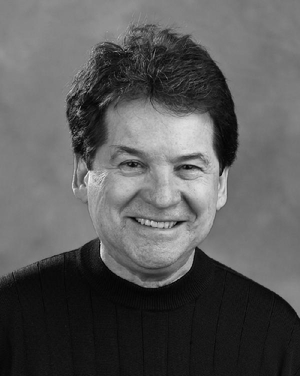Editor's Note: This is an excerpt from Bibby's full-length reflection in the current issue of Convivium. Buy the PDF or printed version now: https://www.cardus.ca/store/4001/.
In late June, the Pew Forum on Religion & Public Life released a report titled "Canada's Changing Religious Landscape." It provides an excellent overview of Statistics Canada data on religious identification and service attendance spanning the 1980s through 2011, complete with many high-calibre charts and tables.
The report is an important resource for anyone who wants to have an up-to-date snapshot of key numbers relating to identification and attendance.
What is less helpful is the report's central focus on a few select trends that are not favourable to Christianity, resulting in a very truncated picture of Canada's changing religious landscape that minimizes the ongoing importance of Catholicism and Protestantism.
According to the Pew report, recent census and survey data generated by Statistics Canada point to three primary "landscape changing" findings that are sufficiently significant that they are allocated the three major headings in the release. First, more people than ever before say they have no religion; second, growing numbers belong to minority faiths; and third, fewer people are attending services on a regular basis. These, of course, are well-known patterns that many observers, including Statistics Canada and yours truly, have been documenting and monitoring for some time.
The three findings, say the report authors, are indicative of the "substantial erosion" in the national shares of Catholicism and Protestantism and the "substantial drop in religious commitment." Illustrative age cohort breakdowns show identification and attendance to be lowest among younger Canadians.
There is no grand conclusion to the report. But it isn't needed. The reader is left with the obvious bottom line: religion, as it has been practised in Canada, is pretty much en route to being a thing of the past. Christianity is in relentless decline, while non-affiliation and other world faith numbers are on the rise. In the words of the report's heading, what we are seeing is Canada's changing religious landscape.
However, there is a major problem with the thrust of the report. In focusing on some important but marginal religious developments, the authors lose sight of the broader Canadian religious scene.
- Yes, it's important to note that the proportion of Canadians who say they have no religion has increased to around 24 per cent. But that hardly is as noteworthy as the fact that 76 per cent continue to identify with a religion.
- It's true that changing immigration patterns have resulted in about nine per cent of Canadians identifying with faiths other than Christianity. At the same time, those who identify with Christian groups is still a much larger 68 per cent.
- And while monthly-plus attendance has decreased significantly during the last half of the 20th century, the Statistics Canada data they use show that it has actually levelled off since around 2000.
- Further, the report totally omits religious group trend differences—essential to understanding the Canadian "religious landscape" due to the fact that Catholics outside Quebec and evangelical Protestants are exhibiting considerable vitality, in sharp contrast to Catholics in Quebec, along with United, Anglican, Presbyterian and Lutheran mainline Protestant groups. As I see it, a critically important restructuring of religion is taking place.
The nature of the Canadian religious landscape by now is fairly clear. As I have attempted to show since the publication of my book Beyond the Gods & Back in 2011, a fairly straightforward pattern characterizes religion in every setting on the planet—including, of course, Canada and the United States. Emerging global data generated primarily by Pew, Gallup and the World Values Survey show that, to varying degrees everywhere, people have three basic responses to religion that constitute a continuum. Individuals variously (1) embrace religion, (2) dismiss religion, and (3) are ambivalent toward religion.
Of considerable importance, the religious-ambivalent-not religious continuum is dynamic and ever changing. Outcomes are not written in the stars. The proportions of populations found along the continuum are ever changing, influenced by cultural, personal and organizational factors. Secularization can and does occur. But so does religious rejuvenation. Secularization proponents see an ultimate movement from religion to no religion. In contrast, the "polarization" argument that I pose recognizes the possibility that things can, and do, go either way. The religion-no religion story is never over.
The "religious markets" here and in the United States are now more open and potentially more lively than ever before. Secularization is anything but inevitable.
Read the full article in the latest Convivium: https://www.cardus.ca/store/4001/.






